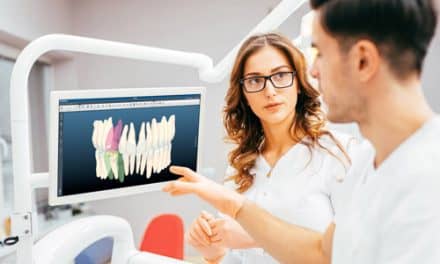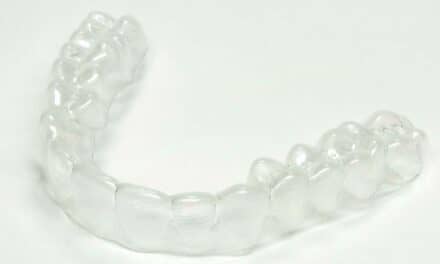In the field of esthetic orthodontics, patient communication cannot be overstated. So many patients come through my door with a preconceived notion of what they want, when in reality a different esthetic treatment would better suit their clinical needs, as well as their lifestyle. The big push in our practice, and one of our biggest differentiators, is that we spend significant time dialoguing with patients in order to understand their goals for treatment. Whether traditional brackets or aligners, I’m here to help them achieve their goals and provide expertise.
Uncovering the Lifestyle
Discussing a patient’s lifestyle early in the process helps us determine together if traditional appliances or aligners would be the best fit. We also work jointly to create a wish list of how they would like to look during treatment and afterward. To guide a patient and help them understand the options, I ask questions such as:
- What would you like to change?
- Have you had orthodontic treatment before?
- Are you willing to wear rubber bands, or have teeth extracted if needed?
- What is the timeframe you would like to be finished with treatment?
- What do you do for work?
Many of my patients, both adults and adolescents, are in the media or spend time in front of a camera and would prefer the most discreet treatment option possible. Factoring in this lifestyle component can help us decide what makes the most sense for treatment without interfering in their day-to-day lives.
Aligners have worked successfully for many of these kinds of patients that require the flexibility due to their lifestyle. I emphasize cooperation and realistic goals for wearing the aligners and allow them to retain autonomy during their treatment. For example, if a patient has a big conference for work or other event, I advise they wear the aligners to bed that week and forgo changing them before. This flexibility to meld to the patient’s routine makes aligners a popular esthetic choice in my practice.
Setting Expectations; Explaining Limitations
Will you be happy with better, or do you want perfect? I’ve found this is the question that effectively reaches the patients who either have challenges with aligner compliance, or may be better suited for a different esthetic treatment. Explaining that aligners have limitations and level setting anticipation of the final results is a crucial conversation that I have upfront with all patients that request aligners.
Several years ago, a patient came to our office for a second opinion, concerned that his teeth were not perfectly straight after using aligners from another orthodontist. After listening to him and explaining the limitations of aligners, I asked him to return to the other orthodontist to discuss his concerns. When I spoke with the other orthodontist to tell him about his patient’s visit and his concerns, he mentioned that he had not reviewed the limitations of aligners with his patient and would review refinements and other treatment options with him.
One disadvantage to aligners is that compliance is essential and that if they need refinements, treatment can take longer than anticipated. We explain this to patients, so they know the timeline expectations. We tell them it is very important to wear aligners 22 hours a day. Of all patients, 150 to 200 cases, I’ve only had one patient that had poor compliance. We lay out what their role is. With complex cases, we say there is going to be a great improvement, but it won’t be perfect and there are limitations. We haven’t had anyone that hasn’t been happy.
Another limitation I lay out for aligner patients with complex cases, is the ease of treatment redirection. With traditional brackets, if a tooth isn’t moving, we can pop off the bracket and change it. Making adjustments to aligners requires a rescan and increased time between the changes.
Understanding the Unpredictability
As orthodontists, we are control freaks; we want each step and mechanism to work according to our plan. This is why I didn’t start using aligners when they were first introduced. I waited a few years before integrating them because I was offended by the results I was seeing. The original products on the market were not representing the vision I had for my career—transforming smiles and helping patients achieve the best-looking results possible. So, I’ve been very selective with the aligner manufacturers I use.
Last year, I introduced 3M Clarity Aligners into my practice. I’ve been impressed because I find them to be more optically clear than other products, and the attachments are more esthetic in shape and size while being easier to place. For patients who are already concerned with appearance during treatment, these esthetic improvements are beneficial.
I still struggle with the unpredictability that aligners bring to treatment plans. I quote a timeline, perhaps one year and it ends up taking five months, or I predict one year and it takes two. However, predictability isn’t perfect with brackets either. For the most part my patients aren’t as concerned with the exact duration as long as the treatment is esthetic and the end result is what they were hoping.
Results Are Paramount
Esthetic orthodontic solutions are a wonderful gift we can offer our patients. Providing them the freedom to look how they want and maintaining their confidence and appearance during treatment is an important service. However, I remind myself it’s not the esthetic appliances I care most about—perfect results are my “why.” It’s a privilege to be able to give someone the smile they’ve wanted their whole life. By communicating with my patients, I’m better able to strike the balance of esthetic and effective treatment. OP












